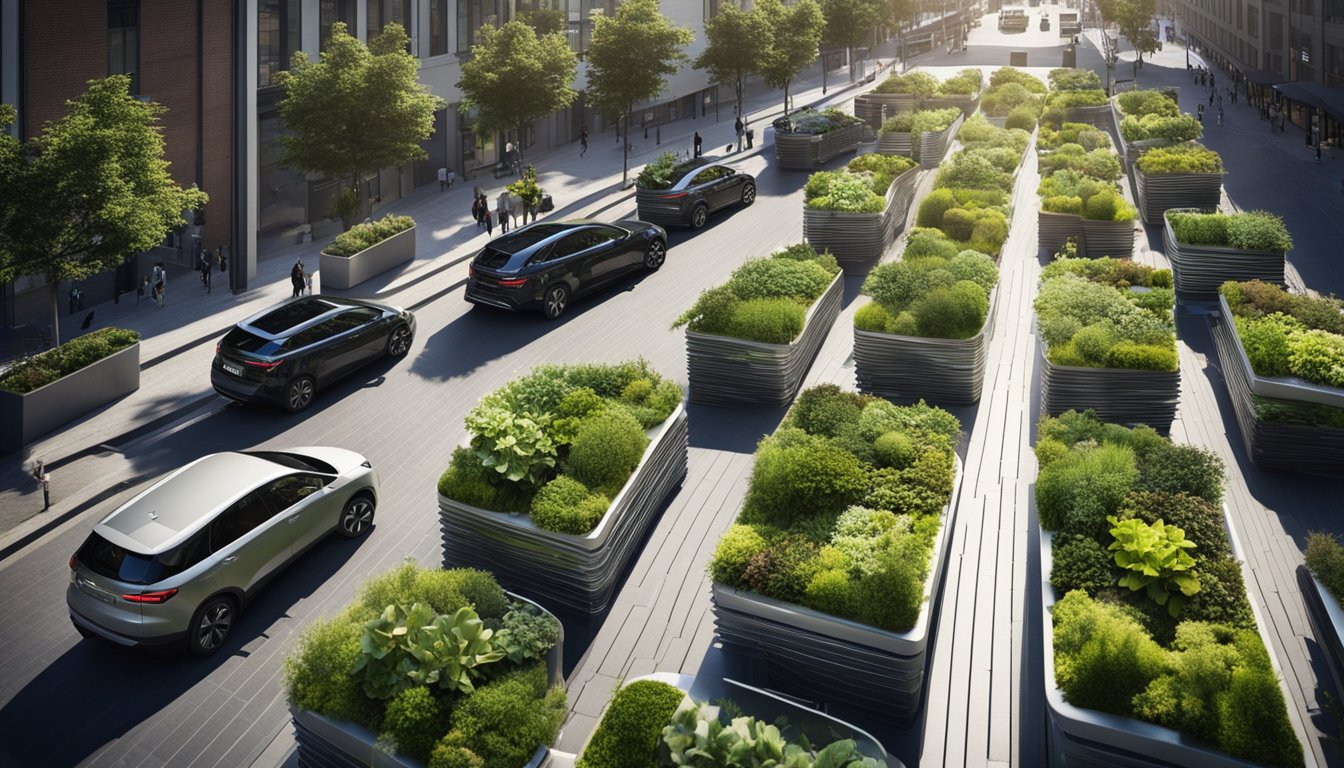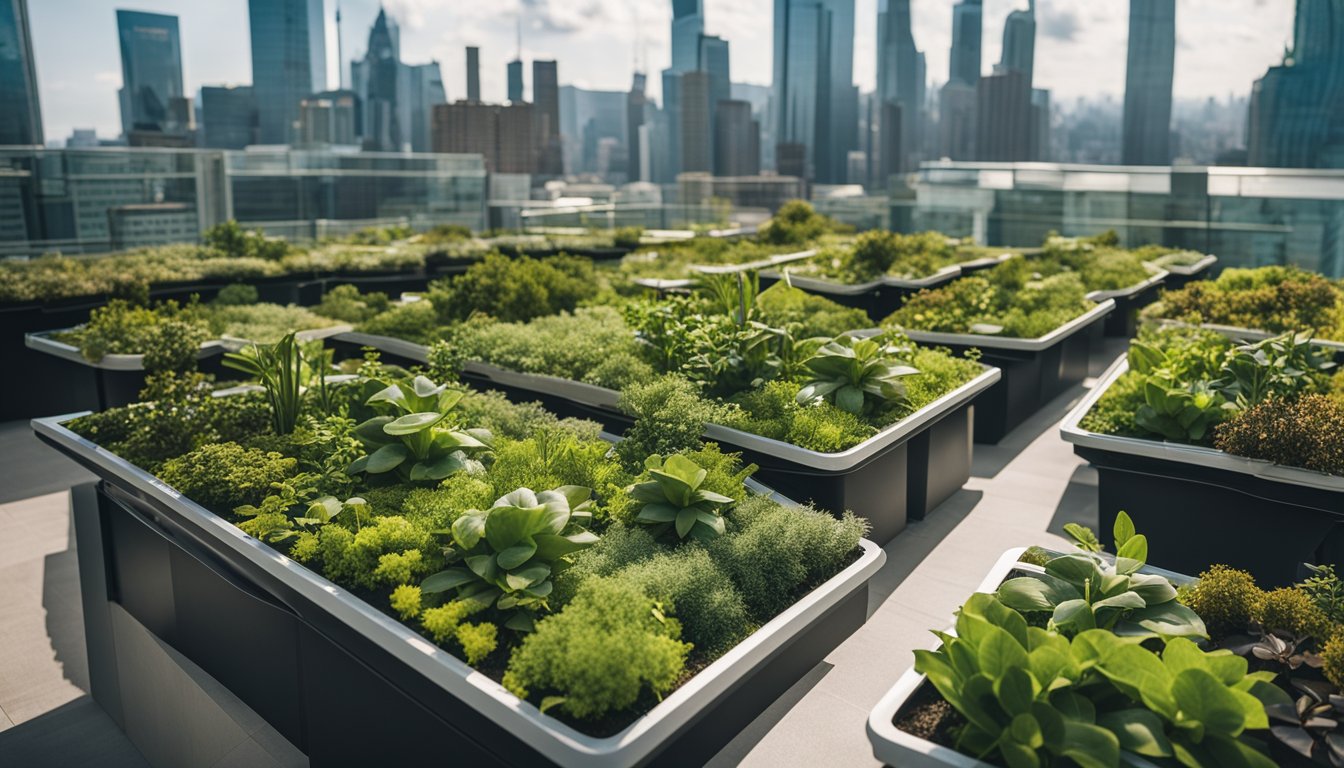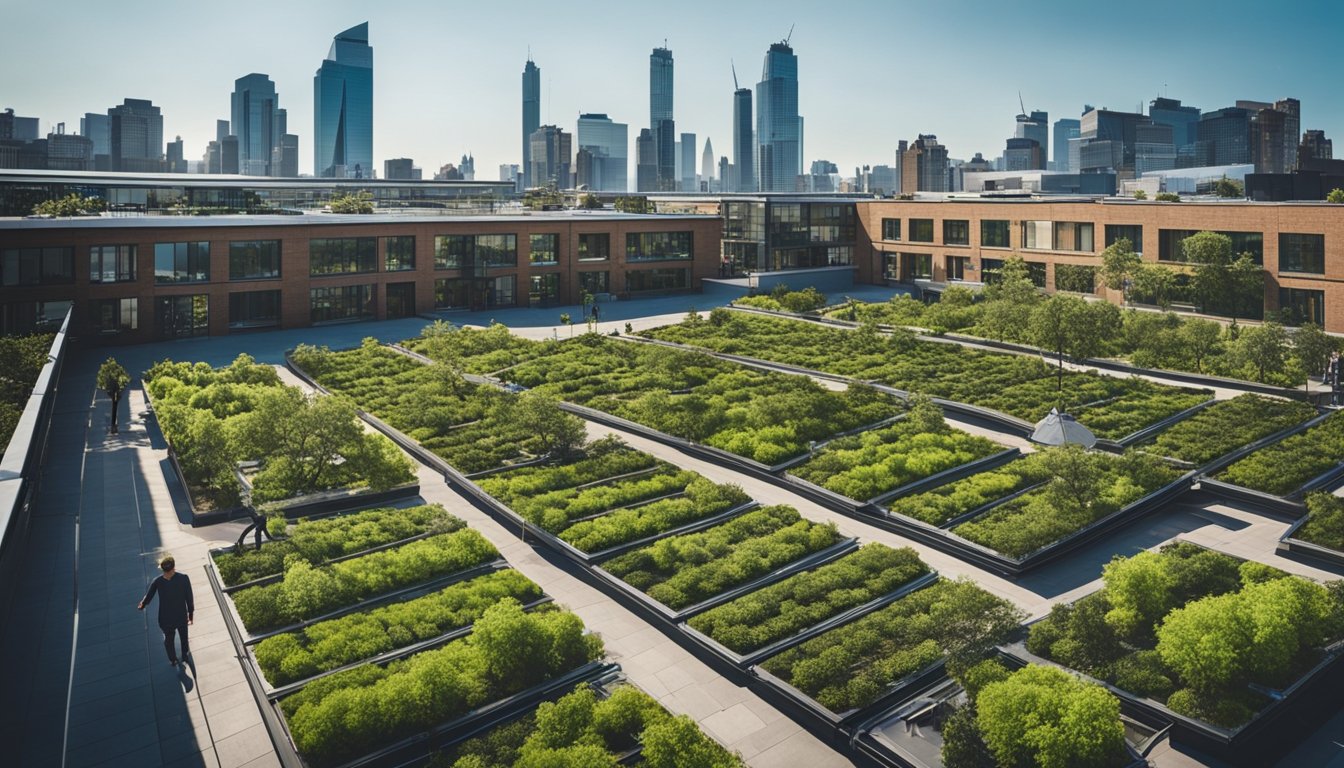Late updated: 06 Feb 2025 14:02
Written by: Sarah Hollister
Eco-Friendly Innovations For Urban Living: Transforming Cityscapes
As urban populations grow and cities become more densely populated, finding innovative ways to live sustainably is crucial. Urban living can often feel disconnected from nature, but recent eco-friendly innovations are reshaping this dynamic, seamlessly integrating green solutions into our concrete jungles. These advancements not only reduce our environmental impact but also enhance the quality of urban life, creating healthier and more sustainable communities.

We're witnessing a transformative shift in urban design, from smart waste management systems that optimise recycling to renewable energy microgrids empowering local communities. Integration of green building materials and energy-efficient designs in our cities is proving vital in the fight against climate change. Such innovations pave the way for sustainable urban development while actively contributing to the reduction of greenhouse gas emissions.
Beyond just infrastructure, the integration of nature into our cityscapes—from living walls to urban gardening—has gained momentum. These efforts not only offer ecological benefits but also improve mental well-being by fostering a connection with the natural world. As we explore these eco-friendly innovations, we invite you to discover the exciting possibilities for creating cities that are both sustainable and fulfilling places to live.
Key Takeaways
- Eco-friendly innovations reshape urban living.
- Nature and technology integration boosts sustainability.
- Innovative designs reduce environmental impact.
Sustainable Urban Development and Infrastructure
Our cities are evolving with innovative strategies to promote sustainability. Through green infrastructure, renewable energy, and circular economies, we can create eco-friendly urban environments that are efficient and liveable.
Revolutionising Urban Spaces with Green Infrastructure
Green infrastructure, such as green roofs, gardens, and green spaces, plays a crucial role in sustainable urban development. By integrating plant life into city planning, we can reduce urban heat and manage rainwater more effectively. These methods not only enhance biodiversity but also improve air quality. Implementing public gardens and parks increases community engagement, as residents take part in maintaining these green spaces. These efforts require thoughtful collaboration between public sectors and private developers to ensure that resources are effectively utilised.
Leveraging Renewable Energy and Smart Grids for Efficiency
Renewable energy sources, like solar panels and wind turbines, are pivotal in reducing urban carbon footprints. By integrating these technologies into our energy systems, we can significantly lessen our dependence on fossil fuels. Smart grids enhance energy efficiency by monitoring and managing energy consumption in real-time. These grids facilitate the balance between energy supply and demand. Through public-private partnerships, we can ensure the deployment and success of these technologies, creating a resilient and adaptive energy infrastructure that meets the needs of growing urban populations.
Building a Circular Economy Through Waste Reduction Strategies
To promote sustainable urban development, we must transition to a circular economy. This approach focuses on waste reduction and the continuous use of resources. By employing strategies such as recycling and repurposing materials, we limit waste destined for landfills. Green building materials sourced from recycled content support construction efforts while reducing environmental impact. Encouraging community involvement in waste management programs fosters a culture of sustainability. Our collective actions can create a seamless and efficient urban environment that thrives on minimal resource consumption.
Integration of Nature and Technology in Urban Living

To create sustainable urban environments, we must seamlessly blend natural elements with advanced technology. In this exploration, we examine urban agriculture, eco-friendly transport, and innovative architecture as pivotal areas leading this transformation.
Promoting Sustainable Lifestyle through Urban Agriculture
Urban agriculture presents a compelling solution for reducing our ecological footprint while fostering community engagement. By utilising techniques like hydroponics and vertical farming, we can optimise space and resources to produce local food.
Community gardens and urban farming initiatives empower residents to engage in gardening, enhancing biodiversity and resilience. These green spaces not only contribute to food security but also provide educational opportunities, teaching people the value of sustainable practices. Incorporating smart technology in this context, such as app-based management tools, allows for efficient cultivation and water usage, further promoting eco-friendly living.
Advancing Eco-Friendly Transport and Public Spaces
The integration of public transportation systems with eco-friendly options marks a significant advancement. Developing robust cycling infrastructure encourages alternatives to car-based commuting, reducing greenhouse gas emissions. Increasing the availability of electric vehicles in cities complements this shift, cutting reliance on fossil fuels.
Reimagining public spaces with renewable resources like solar and wind power ensures sustainable energy solutions are at the forefront. Urban planners can create mixed-use developments, offering accessible and vibrant environments conducive to communal activities without compromising climate actions and sustainability goals.
Innovative Approaches to Green Architecture and Housing
Green architecture is critical in shaping urban landscapes that prioritise environmental health. Utilising recycled materials and integrating renewable energy sources in building designs offer practical steps towards sustainable progress. Features such as green roofs and solar panels showcase how smart technologies can reduce energy consumption and operational costs.
As we work towards inclusive urban environments, offering affordable housing solutions must remain a priority. Mixed-use developments creatively combine residential, commercial, and recreational spaces, enhancing livability. By aligning architecture and urban planning with principles of sustainability and community needs, cities can promote both ecological and social well-being effectively.
Frequently Asked Questions

In urban environments, eco-friendly innovations have taken centre stage. From the use of technology in promoting green urban areas to transforming urban planning policies, the emphasis is on creating sustainable communities.
What steps are being taken to enhance sustainability in city environments?
Cities are adopting smart waste management systems to optimise refuse collection. This involves integrated recycling and composting infrastructure. Moreover, the adoption of green building materials and energy-efficient designs plays a significant role in reducing environmental impact.
How can city dwellers adopt more sustainable lifestyles?
City dwellers can opt for biodegradable food packaging and eco-friendly insulation in their homes. Engaging with local renewable energy initiatives, such as community solar projects, encourages a shift towards greener lifestyles. Adopting sustainable transport options like cycling or electric vehicles also contributes positively.
Which technologies are at the forefront of promoting ecological urban areas?
Technologies like renewable energy microgrids and smart city technologies are pivotal. These tools empower communities to generate their own power, contributing to reduced dependency on conventional energy sources. Innovative approaches such as eco-friendly investments and circular economies are reshaping urban landscapes.
What successful strategies have been implemented in cities to encourage environmental friendliness?
Many cities leverage traditional knowledge combined with modern urban planning to promote sustainability. Encouraging green spaces and local agriculture helps to boost biodiversity. Additionally, public policies support the reduction of carbon footprints through sustainable public transport systems.
How can renewable energy be integrated into urban infrastructure?
Integrating renewable energy involves establishing microgrids that allow localised power generation. Utilising rooftop solar panels and wind turbines are practical solutions. Cities can support this by offering incentives for green energy adoption and encouraging community-led renewable projects.
In what ways are urban planning policies evolving to support environmental sustainability?
Urban planning is increasingly focusing on eco-cities that act as models for sustainable living. Policies now include requirements for sustainable building practices and integrated transportation systems. This shift ensures long-term environmental benefits and improved quality of life for residents.
